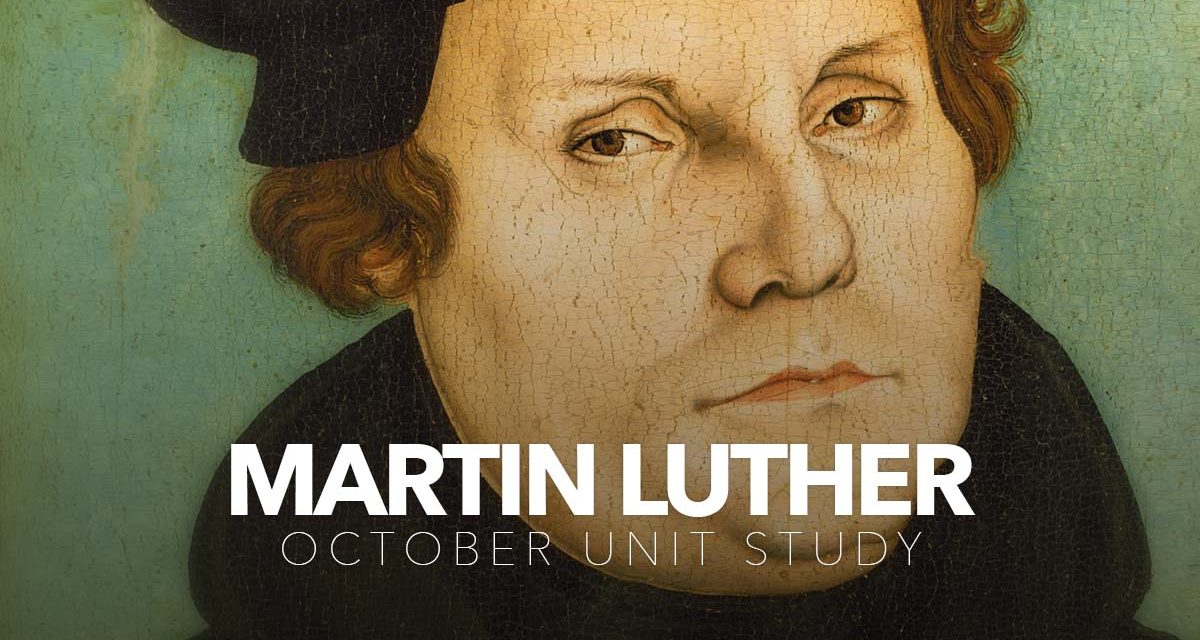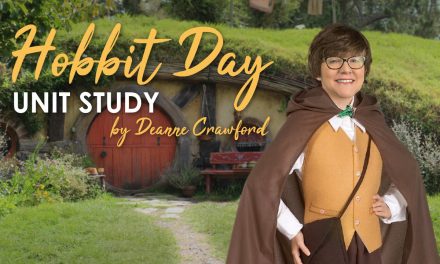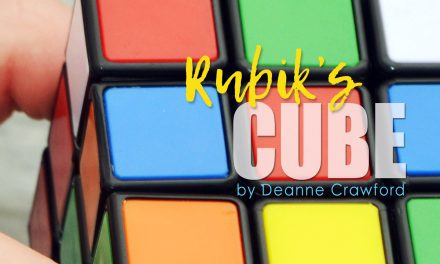“If you Want to Change the World, Pick up your Pen and Write.” Martin Luther
In our October unit study, we will meet a man whose writings brought far-reaching economic, social and religious change and gave confidence to other world changers to share their ideas. Begin by reading the above quotation with your children. Ask your children whether they believe they can change the world through the things they write. Why or why not? This quotation, attributed to Martin Luther, opens the door to many great discussions with our children. Discuss how one person can have significant influence on culture—positively or negatively. Ask your children to name one person who has had a significant impact on our world. Do they agree with this person’s writings or teachings? Why or why not? As a parent, share your perspective on this person (or a different person of influence) and on his or her teachings. It is important for our children to learn to evaluate the writings and discuss differing perspectives of individuals who impact culture in a safe environment.
On a brisk, cool day in late October, monk and university professor, Martin Luther nailed 95 theses (statements of disagreement) to the door of Castle Church. Today, we would be appalled if someone nailed lengthy papers to our church door. In his day, church doors were considered the community bulletin board. Your children may be familiar with the name Martin Luther, but take time to introduce them to him and the tumultuous times in which he lived. Ducksters for Kids and the Khan Academy video, Introduction to the Reformation and Martin Luther provide a fascinating historical view. With your children, explore why Luther felt compelled to share his disagreement publically. While there is not a right or wrong answer to this question, older children especially may enjoy researching and analyzing the clashing world-views in more detail. The Lutheran Reformation website offers historical details from the Protestant perspective and the 21st Century Catholic Apologetics for Mary’s Spiritual Warriors offers a Catholic perspective of Luther’s revolution. While older children explore the worldviews, children of all ages will enjoy learning about the geography of Germany in Luther’s Day. Castle Church in Wittenberg Germany, a historical map of Wittenberg Germany and 16th century Europe all glimpse into the past.
Publishing a German translation of the New Testament, Luther wrote in the preface to the book of Romans, “…most important piece in the new testament…well worth a Christian’s while to memorize it word for word…It is impossible to read or mediate on this letter too much.” While memorizing the book of Romans may seem unattainable, it is praiseworthy to read and meditate as a family on the Apostle Paul’s letter to the Church in Rome around 56 AD.
While Luther’s impact on the religious world is widely known, other significant transformations followed. One of the greatest social impacts that occurred in the shadow of the reformation was improved education for girls. Prior to the reformation, education was focused on the rich, and to some degree, the middle class, male child. Girls were taught homemaking skills, yet rarely formally educated. Luther taught that “every individual is responsible for his or her salvation, a salvation that came through faith, not work, and that could be obtained by reading and studying the scriptures” which led to the assumption that every man (and woman) had a right to education, as it provided the opportunity to serve God and humanity effectively. In fact, Luther called on the state, not the church, to educate children. A Sermon on Keeping Children in School, presented in 1530, provides his educational perspective. Worth noting, Martin Luther is also quoted as saying, “I am very much afraid that the schools will prove the gates of hell unless they diligently labor in explaining the Holy Scriptures and engraving them in the hearts of youth. I advise no one to place their children anywhere where the Scriptures do not reign paramount.”
During this time of religious and social turmoil, Science also experienced change through other men’s insightful writings. Introduce children to the theories of earth-centered (geocentric) and sun-centered (heliocentric) solar systems. Ask your children: What is the center of our universe–the sun or the earth? Older children may know the answer quickly, but encourage discussion by asking if scientists always believed this to be true. While a sun-centered system was first introduced around 230 BC, the idea was never accepted and natural philosophers continued to endorse the geocentric system until the 16th century. Nicolaus Copernicus, teaching an orderly, heliocentric system, directly challenged the geocentric theory in his writings, On the Revolutions of Celestial Spheres. Introduce children to the innovative discoveries of Copernicus with this short YouTube video, or the Copernicus Reading Lessons (for younger children).
Also during this time, one of the greatest scientific developments in our understanding of the human body occurred. Belgian physician Andreas Vesalius observed mistakes in the understanding of anatomy that had been prevalent since the discoveries of Galen, hundreds of years before. As you can imagine this met with great resistance, prompting him to publicly dissect the body of a dead felon! Learn more about the Vesalius impact on the world of medicine and how he revolutionized our knowledge of the human body. Not only were significant discoveries made in our understanding of anatomy, but it was during this time that Girolamo Fracastoro became the first person to give a reasonable explanation of how disease was spread from person to person. This is a perfect time to teach young children about the importance of hand washing to prevent germ (and disease!) transmission.
As we come to the end of our unit study, reflect on the lasting impact of one man willing to take a stand. Luther, with his belief in the power of questioning the status quo, ushered in a time of personal appraisal and standing for beliefs, which led to the Renaissance and beyond. Learn more about Daily Life during the Renaissance, Renaissance Art, or interact with a historical timeline of events.
I would love to hear your unit study adventures or if you have a topic you wish to see addressed, feel free to contact me.
~Deanne





